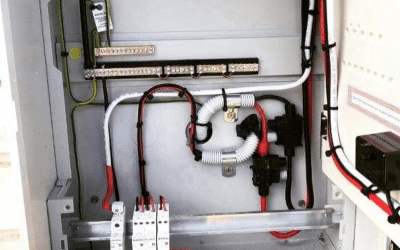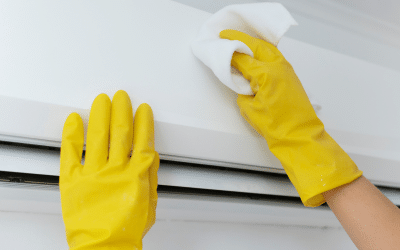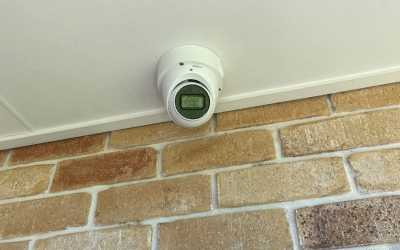Electrical safety in our homes is a critical aspect that often goes overlooked. In a world where we heavily rely on electricity for our daily activities, understanding and implementing electrical safety measures is not just a matter of convenience, but a crucial necessity. The consequences of neglecting electrical safety can range from minor electrical faults to severe accidents, including fires, electric shocks, and even fatalities.
In Australia, where the use of various electrical appliances is integral to our lifestyle, it’s essential to be aware of the common electrical hazards that lurk within our homes. These hazards can stem from outdated wiring systems, overburdened power outlets, improper use of extension cords, and faulty electrical appliances. Recognising these risks is the first step towards safeguarding our homes and loved ones.
In the following sections, we will delve into the top 10 electrical safety tips that every homeowner should be acquainted with. These tips are not just preventive measures; they are integral practices that contribute to creating a safe and secure living environment. By staying informed and vigilant, we can significantly reduce the risks associated with electrical systems in our homes, ensuring a safer and more secure environment for everyone.
Understanding Home Electrical Systems
Grasping the basics of home electrical systems is pivotal for every homeowner, as it lays the foundation for effective electrical safety. In essence, a typical home electrical system encompasses a network of wiring,
circuits, outlets, and appliances, all interconnected to provide power where and when it’s needed. This system is designed with safety devices like circuit breakers or fuses, which play a critical role in preventing overloads and potential fires.
However, despite these safety measures, common risks are still associated with home electrical systems. One of the primary risks is outdated wiring, which can struggle to cope with the modern household’s demand for electricity, leading to overheating and potentially causing electrical fires. Similarly, faulty or ageing electrical appliances can become hazards if not properly maintained or replaced when needed.
Another significant risk is the misuse of electrical components. Overloading power outlets, using extension cords as permanent wiring solutions, and DIY electrical repairs without proper knowledge or certification are all practices that can lead to serious accidents. Additionally, homes in areas prone to natural events like floods or storms may face unique electrical challenges, as water and electricity are a dangerous combination.
Understanding these aspects of home electrical systems and the inherent risks involved is crucial. It empowers homeowners to make informed decisions and take proactive steps in maintaining electrical safety in their homes. In the next sections, we’ll explore specific electrical safety tips that can help mitigate these risks, ensuring a safer living environment.
Tip #1: Avoid Overloading Outlets
One of the most common yet overlooked hazards in home electrical systems is the overloading of outlets. When multiple devices are plugged into a single outlet, especially high-wattage appliances, it can strain the electrical system, leading to overheating and potentially causing fires. Overloading outlets is a particularly pertinent issue in older Australian homes, where the electrical systems might not have been designed for the high demands of modern technology.
To avoid overloading, it’s crucial to understand the capacity of your outlets and the power requirements of your appliances. A simple yet effective measure is to distribute your electrical devices across different outlets, rather than relying on one. Be especially cautious with appliances that draw a lot of power, such as heaters, air conditioners, and large entertainment systems.
If you find yourself regularly needing more outlets, it might be time to consider having a licensed electrician install additional ones. This is far safer than relying on extension leads or double adapters as a permanent solution.
Using Power Strips Safely
Power strips and surge protectors can offer a convenient solution for additional plug-ins, but they must be used correctly to ensure safety. It’s important to choose a power strip with an in-built surge protector, which guards against sudden spikes in voltage that can damage electrical devices.
When using a power strip, follow these guidelines:
- Do not plug high-wattage appliances into power strips, as they are not designed to handle such loads.
- Ensure the power strip is fully uncoiled to avoid overheating.
- Regularly check for signs of damage or wear, and replace if necessary.
- Do not daisy-chain power strips (plugging one into another) as this can lead to overloading.
By adhering to these practices, you can utilise power strips safely without compromising the safety of your home’s electrical system.
Tip #2: Regular Electrical Inspections and Maintenance
Ensuring the ongoing safety and efficiency of your home’s electrical system involves more than just careful daily use; it also necessitates regular professional inspections and maintenance. These inspections are vital in identifying potential issues before they become serious problems, such as outdated wiring, faulty circuits, or deteriorating insulation. In Australia, where varying weather conditions can affect electrical systems, these checks are particularly important.
A professional electrical inspection typically includes a thorough examination of the entire electrical system. Qualified electricians will check the condition of wiring, safety switches, power outlets, and electrical appliances. They will also assess the electrical panel for any signs of overload or faults. This kind of detailed evaluation helps ensure that all components meet the current safety standards and function efficiently.
Regular maintenance, ideally carried out every few years, can significantly extend the life of your electrical system and prevent costly repairs or dangerous accidents.
DIY Inspections: What to Look For
While professional inspections are essential, homeowners can also perform basic electrical safety checks to keep an eye on their system’s health. Here are some things you can do:
- Examine power cords and plugs for any signs of wear, tear, or damage. Frayed or exposed wires are a red flag.
- Test safety switches and circuit breakers regularly to ensure they are functioning correctly.
- Look out for flickering lights, which can indicate a larger issue with your electrical system.
- Check for hot or discoloured power outlets, as these can be signs of electrical problems.
- Ensure that all outlets in wet areas, like bathrooms and kitchens, are not showing signs of moisture ingress.
Performing these simple checks can help you identify issues early and take prompt action, contributing to the overall safety and longevity of your home’s electrical system.
Tip #3: Childproofing Electrical Outlets
Childproofing electrical outlets is an essential safety measure in any home, particularly for families with young children. Curious by nature, children may unknowingly expose themselves to electrical hazards by inserting objects into outlets or playing with electrical cords. In Australia, where the standard household voltage is 230 volts, the risk of serious injury from electrical accidents is substantial, making childproofing a crucial aspect of home safety.
Several effective strategies and devices can be employed to safeguard children from electrical hazards:
- Outlet Covers: These are simple plastic covers that fit securely over unused power points, preventing children from inserting objects into them.
- Tamper-Resistant Receptacles: These outlets come with built-in shutters that block foreign objects while allowing plugs to be inserted normally. They are particularly useful as they provide continuous protection, unlike removable covers.
- Box Covers: For outlets in constant use, box covers are a practical solution. They encase the entire outlet and plugs, with a small opening for cord access, keeping everything else out of reach.
- Cord Shorteners and Organisers: These devices help manage and conceal electrical cords, reducing the temptation for children to play with them.
In addition to installing these devices, educating children about the dangers of electricity from an early age is equally important. By combining physical safeguards with awareness and education, parents can significantly reduce the risk of electrical accidents involving children in the home.
Tip #4: Proper Handling of Electrical Appliances
Safe handling of electrical appliances is a fundamental aspect of home safety. Given the wide range of appliances used in Australian homes, from kitchen gadgets to personal grooming devices, understanding how to use them safely is key to preventing accidents. This is especially critical when using appliances near water, as the combination of electricity and moisture can be extremely hazardous.
When using electrical appliances, always ensure your hands are dry, particularly in areas like the kitchen or bathroom. Appliances should be kept at a safe distance from sinks, bathtubs, and showers to prevent accidental water contact. Additionally, it’s important to use only appliances that are in good working order. Regularly check for frayed cords, broken plugs, or any signs of damage.
Unplugging Appliances: A Simple Yet Effective Practice
One of the simplest yet most effective practices for electrical safety is unplugging appliances when they are not in use. This not only conserves energy but also reduces the risk of electrical fires and potential accidents. Unplugging appliances can also protect them from power surges, which can cause damage, especially during storms or unexpected electrical disruptions.
Furthermore, unplugging appliances can be a precautionary measure against potential hazards that might arise if small children are present, as it eliminates the risk of them turning on the appliance. This practice instils a habit of mindfulness regarding electrical safety, ensuring a safer home environment.
Tip #5: Extension Cord Safety
Extension cords, while incredibly useful, can pose significant risks if not used correctly. In Australia, where DIY and home improvements are popular, understanding the dos and don’ts of extension cord usage is essential for maintaining a safe home environment.
Dos of Extension Cord Use:
- Use the Right Cord: Ensure the cord is suitable for its intended use, whether indoor or outdoor and can handle the power load of the appliances connected to it.
- Inspect Regularly: Check cords for damage or wear and replace any that are frayed or have exposed wires.
- Keep Cords Visible: Avoid running extension cords under carpets or furniture where they can overheat or get damaged without notice.
- Unplug When Not in Use: Like other appliances, unplug extension cords when they’re not actively powering devices.
Don’ts of Extension Cord Use:
- Avoid Daisy Chaining: Connecting multiple extension cords increases the risk of overloading and electrical fires.
- Don’t Overload: Don’t plug in more devices than the cord is rated to handle.
- Avoid Permanent Use: Extension cords are designed for temporary use. For long-term needs, consider installing additional outlets.
Alternatives to Long-Term Use of Extension Cords:
For situations where you find yourself relying on extension cords regularly, it may be time to look at more permanent solutions. Hiring a licensed electrician to install additional power points is a safer and more efficient alternative. This not only reduces the clutter of cords but also minimises the risk of electrical hazards. Additionally, it’s worth evaluating and rearranging where you use certain appliances to reduce dependency on extension cords. By strategically planning your space, you can often use appliances closer to existing outlets.
Tip #6: Dealing with Water and Electricity
The combination of water and electricity can be extremely dangerous, a fact that’s particularly relevant in Australian homes where outdoor activities and water usage are common. Understanding the risks and implementing preventative measures is crucial to avoid serious accidents or even fatalities.
Dangers of Mixing Electricity with Water:
- Electrocution Risk: Water is an excellent conductor of electricity. When electrical appliances or wiring come into contact with water, it creates a high risk of electrocution.
- Short Circuits: Water can cause short circuits in electrical systems, potentially leading to fires or damage to appliances.
- Corrosion and Damage: Prolonged exposure to moisture can corrode electrical wiring and components, compromising their safety and effectiveness.
Preventative Measures:
- Keep Appliances Away from Water: Always use electrical appliances away from water sources. In areas like bathrooms and kitchens, be extra cautious about where you place and use these appliances.
- Use Ground Fault Circuit Interrupters (GFCIs): In areas prone to moisture, such as bathrooms, kitchens, and outdoor spaces, GFCIs can prevent electrocution by shutting off the power if an electrical current’s pathway deviates from its intended route.
- Regular Inspections: Have a licensed electrician inspect your home’s electrical system regularly to ensure that it’s safe and up to code, especially in areas exposed to water.
- Immediate Action for Spills: If water spills on or near electrical devices, turn off the power at the circuit breaker before handling the situation. Never attempt to unplug or clean up the spill while the power is on.
- Educate Household Members: Ensure everyone in your home understands the risks of mixing water and electricity and knows how to respond in case of accidents.
By adhering to these guidelines, homeowners can significantly reduce the risks associated with water and electricity in their homes, ensuring a safer living environment for all occupants.
Tip #7: Be Cautious with Heating Appliances
Heating appliances like space heaters, electric blankets, and heat lamps are widely used in Australian homes, especially during the cooler months. While they provide comfort, it’s crucial to use them with caution to prevent accidents, including burns and fires.
Safe Usage of Heating Appliances:
- Read and Follow Instructions: Always refer to the manufacturer’s guidelines for the correct use and maintenance of the appliance.
- Inspect Regularly: Check for any signs of wear or damage before use. Look for frayed cords, cracked plugs, or any abnormality.
- Avoid Overloading Power Points: Plug heating appliances directly into a wall outlet and avoid using extension cords or power boards, as these appliances typically draw a lot of power.
Recommendations for Placement and Monitoring:
- Maintain Safe Distance: Keep heating appliances at least one meter away from flammable materials like curtains, bedding, furniture, and clothing.
- Stable and Flat Surfaces: Always place heaters on a stable, level surface where they cannot be easily knocked over.
- Supervision: Never leave heating appliances unattended, especially when children or pets are present. Turn them off before leaving a room or going to sleep.
- Adequate Ventilation: Ensure the room is well-ventilated to prevent overheating and to allow for proper air circulation.
By following these safety measures, you can enjoy the warmth and comfort of your heating appliances while minimising the risk of accidents. Remember, regular maintenance and cautious usage are key to ensuring the safe operation of these devices.
Tip #8: Implementing GFCI in High-Risk Areas
Ground Fault Circuit Interrupters (GFCIs) are a critical safety device in modern electrical systems, particularly in areas of the home where electricity and water may come into close contact, such as bathrooms and kitchens. Understanding what GFCIs are and their importance is essential for every Australian homeowner.
Explanation of Ground Fault Circuit Interrupters (GFCIs):
GFCIs are designed to protect people from electric shock and reduce the risk of fire. They work by constantly monitoring the flow of electricity in a circuit. If the GFCI detects a sudden loss of current (as would happen if electricity is flowing through an unintended path, like water or a person), it quickly cuts off the power supply to that circuit. This interruption happens within milliseconds, often preventing serious electric shocks.
Importance in Bathrooms and Kitchens:
- Protection from Electric Shock: In areas like bathrooms and kitchens, the risk of electric shock is higher due to the presence of water. GFCIs can significantly reduce this risk by immediately cutting off the power if a fault is detected.
- Preventing Electrical Fires: These areas often have multiple appliances, which increases the potential for electrical faults. GFCIs can help prevent fires that might result from these faults.
- Compliance with Safety Standards: In many regions, including Australia, installing GFCIs in bathrooms and kitchens is a standard safety requirement.
Implementing GFCI protection in these high-risk areas is not just a safety recommendation; it is an investment in the overall safety of your home. If your home is not equipped with GFCIs, consider hiring a licensed electrician to upgrade your electrical system. This upgrade is especially crucial in older homes that might have yet to be originally equipped with these life-saving devices.
Tip #9: Regularly Check and Replace Damaged Wiring
Regularly inspecting and addressing any signs of damaged or frayed electrical wiring is a vital part of maintaining a safe home environment. In Australian homes, where a variety of electrical devices are used daily, the risk of wear and tear on electrical cords and wiring is heightened. Identifying these issues early can prevent more serious problems like electrical fires or electrocution.
Identifying Damaged or Frayed Electrical Cords:
- Visual Inspection: Regularly check the condition of cords on appliances, lamps, and other electrical devices. Look for any signs of fraying, cracking, or wear.
- Feel for Heat: Damaged wiring can sometimes cause cords to feel unusually warm to the touch.
- Smell for Burning: A telltale sign of wiring issues is a burning smell near electrical devices or outlets.
- Listen for Buzzing Sounds: Buzzing or sizzling sounds from an outlet or appliance can indicate an electrical problem.
When to Call a Professional for Repairs:
- Visible Damage: If you notice any visible damage to wiring or insulation, it’s time to call a professional electrician. Attempting DIY repairs on electrical wiring can be dangerous.
- Frequent Circuit Breaker Trips: If a particular appliance or circuit frequently causes the breaker to trip, it’s a sign that professional inspection is needed.
- Old or Outdated Wiring: Homes with old or outdated wiring systems should be inspected by a professional to ensure they meet current safety standards.
- After Water Exposure: If your electrical system has been exposed to water, for instance, due to flooding, a professional should check it before you resume using electricity in the affected areas.
Regular checks and timely professional intervention are key in preventing the risks associated with damaged or deteriorated wiring. By being proactive, homeowners can ensure their electrical systems remain safe and functional.
Tip #10: Adequate Fire Safety Measures
Implementing appropriate fire safety measures is a crucial aspect of electrical safety, particularly in the context of Australian homes where the risk of electrical fires is a real concern. One of the key elements of fire safety is having the right type of fire extinguisher and knowing how to use it in case of an electrical fire.
The Importance of the Right Type of Fire Extinguisher:
- Selecting the Extinguisher: For electrical fires, it’s important to use a CO2 or dry chemical extinguisher (Class E in Australia), which is safe for use on electrical equipment.
- Accessibility: Keep the extinguisher in an accessible location, ideally near areas where electrical fires are most likely to occur, like the kitchen or garage.
How to Use a Fire Extinguisher in Case of an Electrical Fire:
- Disconnect Power: If possible and safe, disconnect the electricity source before using the extinguisher.
- Remember the PASS Technique: Pull the pin, Aim at the base of the fire, Squeeze the lever slowly, and Sweep from side to side.
- Safety First: If the fire is too large or out of control, evacuate immediately and call emergency services.
Installing Smoke Alarms and Carbon Monoxide Detectors
The installation of smoke alarms and carbon monoxide detectors plays a significant role in enhancing electrical safety. These devices provide an early warning in case of fire or carbon monoxide leaks, which can be life-saving.
Placement and Maintenance of These Devices:
- Strategic Placement: Install smoke alarms in every bedroom, outside each sleeping area, and on every level of the home, including the basement. Carbon monoxide detectors should be placed near sleeping areas and according to the manufacturer’s recommendations.
- Regular Testing and Maintenance: Test these alarms monthly by pressing the test button, and replace batteries at least once a year or as needed. Replace the entire unit every 10 years or as per the manufacturer’s guidelines.
- Stay Informed: Be aware of the sound of the alarm and educate all household members about what to do if it goes off.
By ensuring the right fire safety measures are in place and understood by all occupants, homeowners can significantly enhance the safety of their living environment, particularly from electrical hazards.
Bonus Tip: Educating Family Members
Electrical safety education for all household members is a vital component of creating a secure home environment. In Australian homes, where a diverse range of electrical appliances and systems are in use, educating everyone, including children, on the basics of electrical safety can significantly reduce the risk of accidents and injuries.
Importance of Educating All Household Members on Electrical Safety:
- Awareness: Ensuring that everyone understands the potential hazards associated with electricity helps prevent careless mistakes.
- Preparedness: Educated family members are better prepared to handle electrical emergencies, such as power outages or appliance malfunctions.
- Shared Responsibility: When everyone is aware, the responsibility of maintaining a safe electrical environment is shared, reducing the burden on any one individual.
Simple Tips and Rules to Teach Children:
- No Touching Electrical Outlets: Teach children that outlets are not to be played with and explain the dangers of inserting objects into them.
- Keep Electronics Away from Water: Stress the importance of not using electronic devices near water, such as in the bathroom or near swimming pools.
- Cord Safety: Educate them about the risks of pulling cords out of the wall and playing with electrical cables.
- Usage of Appliances: Instruct older children on the correct and safe use of appliances, such as not overloading power points and turning off appliances after use.
- Emergency Response: Teach them what to do in case of an electrical accident, like not touching a person who is being electrocuted and calling for adult help or emergency services immediately.
By instilling these principles and practices from a young age, children grow up with an ingrained understanding of electrical safety. This not only keeps them safe but also contributes to the overall safety culture within the home. Remember, an informed family is a safer family when it comes to dealing with electricity.
When to Call a Professional Electrician
Knowing when to call a professional electrician is crucial for maintaining the safety and functionality of your home’s electrical system. While some minor tasks may be suitable for a DIY approach, certain scenarios require the expertise of a certified professional, especially in Australia where strict electrical standards are enforced.
Scenarios that Require Professional Intervention:
- Circuit Breaker Trips Frequently: If your circuit breaker trips regularly, it could indicate an underlying issue that needs expert attention.
- Flickering or Dimming Lights: This can be a sign of a poor connection and should be checked by a professional.
- Outdated Wiring: Homes with old wiring systems need to be inspected and possibly upgraded by a qualified electrician.
- Installation of New Appliances: For the safe installation of appliances that require hardwiring, such as ovens or air conditioners.
- Buzzing Sounds or Burning Smells: These are immediate red flags indicating potential electrical hazards.
- Water Damage: If your electrical system has been exposed to water, it should be inspected by a professional before being turned back on.
How to Choose a Reliable and Certified Electrician:
- Check Qualifications and Licensing: Ensure the electrician is fully licensed and qualified to perform electrical work in Australia.
- Look for Experience and Specialisation: Choose someone with experience in the type of work you need, whether it’s residential or commercial electrical services.
- Read Reviews and Seek Recommendations: Check online reviews or ask for recommendations from friends or family.
- Ask for a Quote: A reputable electrician should be willing to provide a detailed quote before starting any work.
- Ensure They Follow Safety Standards: A professional electrician should adhere strictly to safety regulations and use high-quality, compliant materials.
Calling a professional electrician in these scenarios not only ensures safety but also guarantees that the work is carried out per Australian standards, reducing the likelihood of future problems.
Preventative Measures for Electrical Safety
Adopting a proactive approach to electrical safety is paramount in ensuring the well-being of everyone in your home. By implementing key preventative measures, many common electrical hazards can be avoided, thereby maintaining a safe and secure living environment. This summary encapsulates the essential steps every Australian homeowner should consider:
Summarisation of Key Preventative Measures:
- Regular Inspections: Have your electrical system professionally inspected and maintained regularly.
- Childproof Outlets: Use outlet covers and tamper-resistant receptacles to protect young children.
- Proper Appliance Handling: Use and maintain electrical appliances according to manufacturer guidelines and keep them away from water sources.
- Safe Use of Cords: Avoid overloading power points and extension cords, and replace any damaged or frayed wiring promptly.
- Install GFCIs: Ground Fault Circuit Interrupters should be installed in high-risk areas like bathrooms and kitchens.
- Fire Safety Equipment: Ensure you have the right type of fire extinguisher and smoke alarms installed, and know how to use them.
- Educate Household Members: Teach all family members, especially children, about the basics of electrical safety.
- Know When to Call a Professional: Understand the situations that require the expertise of a licensed electrician.
Taking a proactive stance in electrical safety involves not only implementing these measures but also staying informed about electrical safety practices. It’s about creating a culture of safety within the home, where prevention is prioritised, and risks are actively managed. Regular updates on safety standards, staying alert to signs of electrical problems, and a commitment to immediate action when issues arise are all part of a proactive approach. By following these guidelines, homeowners can significantly reduce the risks associated with electricity, ensuring a safe and comfortable living environment.
Key Takeaways
This article has highlighted several vital aspects of electrical safety that every homeowner should be aware of. Here’s a summary of the most critical points:
- Understanding Electrical Systems: Recognise the basics of your home electrical system and the common risks associated with it.
- Avoid Overloading Outlets: Distribute electrical devices across various outlets and understand the limitations of power strips.
- Regular Inspections and Maintenance: Schedule professional electrical inspections and perform basic safety checks routinely.
- Childproofing: Implement safety measures to protect children from electrical hazards.
- Handling Appliances Safely: Use and maintain electrical appliances properly, especially near water.
- Extension Cord Safety: Use extension cords correctly and understand their limitations.
- Dealing with Water and Electricity: Be extremely cautious when these two elements intersect.
- Heating Appliances: Use them safely, with proper placement and supervision.
- GFCIs in High-Risk Areas: Install Ground Fault Circuit Interrupters in areas like bathrooms and kitchens.
- Damaged Wiring: Regularly check for and address any wiring issues.
- Fire Safety Measures: Have appropriate fire extinguishers and smoke alarms, and know how to use them.
- Educating Family Members: Ensure everyone in the household understands basic electrical safety principles.
Conclusion
The importance of electrical safety in the home cannot be overstated. It’s not just a matter of preventing inconveniences; it’s about safeguarding lives and property. Electricity, while indispensable in our daily lives, can pose significant risks if not managed responsibly.
Final Thoughts on the Importance of Electrical Safety in the Home
Electrical safety should be a top priority for every homeowner. It requires a combination of knowledge, vigilance, and proactive measures. Remember, the most effective safety measures are often the simplest, such as regularly checking appliances and cords, educating family members, and knowing when to call a professional.
By adhering to the tips and practices outlined in this article, you can create a safer home environment. So, take action today, prioritise safety, and ensure that your home remains a haven for you and your loved ones.
FAQ’s
What are the top 10 safety rules in electrical for homeowners?
The top 10 home electrical safety tips include:
- Avoid overloading outlets.
- Conduct regular electrical inspections and maintenance.
- Childproof electrical outlets.
- Handle electrical appliances safely.
- Use extension cords correctly.
- Be cautious when mixing water and electricity.
- Use heating appliances with care.
- Install Ground Fault Circuit Interrupters (GFCIs) in high-risk areas.
- Regularly check and replace damaged wiring.
- Implement adequate fire safety measures, including the right type of fire extinguisher.
How do you ensure electrical safety at home?
To ensure electrical safety at home, regularly inspect your electrical system, use appliances as per manufacturer guidelines, avoid overloading power points, use GFCIs in areas like bathrooms and kitchens, and keep fire safety equipment accessible. Educating all household members about basic electrical safety is also crucial.
How can we stay safe at home with electricity?
Staying safe at home with electricity involves adopting practices like using childproof devices on outlets, avoiding the use of damaged electrical appliances, and ensuring proper handling and storage of all electrical equipment. Additionally, being aware of your home’s electrical system’s capabilities and limitations is vital.
What are the dangers of outdated or faulty electrical wiring in homes?
Outdated or faulty electrical wiring can lead to serious hazards such as electrical fires, shocks, or short circuits. Such wiring may struggle to handle the demands of modern appliances, resulting in overheating and potentially dangerous situations.
How often should electrical inspections be conducted in Australian homes?
It’s recommended to have professional electrical inspections in Australian homes every few years, or more frequently if you reside in an older property or an area prone to environmental stresses like storms or flooding. Regular inspections help identify potential hazards before they become serious issues.







